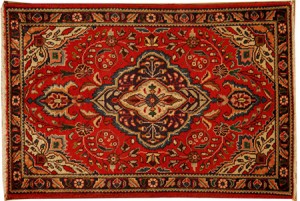How Not to Get Ripped Off When Buying a Persian Rug
The Consumer Complaints Blog is dedicated to providing an outlet for those who have been duped by businesses and organizations. However, as part of our commitment to you, the consumer, we have begun compiling information about how not to get duped in the first place.
Our first post in this section is for anyone out there interested in buying a Persian rug. Sure, you may still fall victim to dishonest business practices, but remembering these points will help reduce the chances of becoming a victim in the first place.
(We talked to professionals in their industry to get these tips.)

1. Don’t be fooled by inflated prices. Chances are, that massively discounted sales price hasn’t actually been massively discounted – the “sale” price listed is most likely the fairest price or the manufacturer’s suggested retail price. Rug stores are infamous for advertising “going out of business” sales. Avoid the hype!
2. Check the exact origin of the carpet, since this makes a real difference in quality and craftmanship. For example, the designs may be of Iranian origin but the carpet was made somewhere else.
3. Related to tip #2, this is particularly true for silk carpets of Persian origin. There is a huge difference between Persian silk and non Persian silk.
4. Thicker isn’t always better. In most cases, the better carpet is actually thinner, not thicker.
5. In general, finer rugs are those with smaller knots and more sophisticated weaves. Beware: an intricate design does not make a carpet finer. Don’t look at the design – look at the weave.
October 13th, 2009 at 9:27 am
This is good advice.
Persian rugs differ by region.
Within the world of Persian rugs, there are several styles. These styles and techniques are mainly defined by the region or city in which they were made and are heavily influence by the surrounding culture and social customs of that area
Thanks for the article.